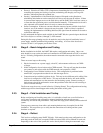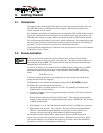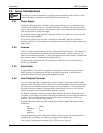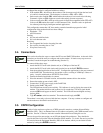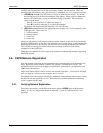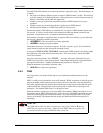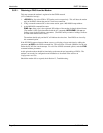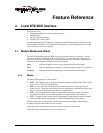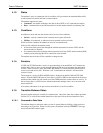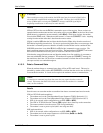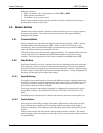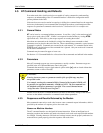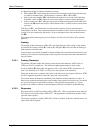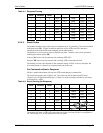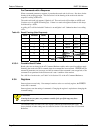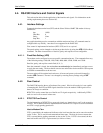
Feature Reference DART 300 Modem
Page 18 2110212 Rev 1.0
4.1.2. States
The modem’s state, in conjunction with its condition, will govern how the modem handles traffic
to and from the host and to and from a remote modem.
The modem supports two states:
• Command – the modem exchanges data with its host (DTE) as AT commands and replies.
• Data – communication is passed between the local and remote terminals as telemetry data.
4.1.3. Conditions
In addition to mode and state the modem can be in one of two conditions:
• On-line – actively connected with a network session open (off-hook).
• Off-line – disconnected, or without an active network session (on-hook).
While in off-line condition the modem can only be in command state.
In the on-line condition, the modem can be:
• In data state which passes data through the modem between the local host (DTE) and the
remote terminal or network.
• In command state which exchanges data between the local host (DTE) and the modem (DCE)
without passing it through the active connection to the network.
The modem must be in the off-line condition to change modes.
4.1.4. Sessions
In UDP and TCP PAD modes a session is open when there is an established “call” between the
modem and a client or server on the network (although UDP does not guarantee the other end is
on-line). When a session is open, the DART 300 modem is in on-line condition and the PAD is
active to send and receive data. When the “call” is terminated, the modem is off-line and the
session is closed.
The concept of a session in SLIP and PPP modes is distinct from that in UDP and TCP PAD
modes. From the DART 300 point of view, there is a SLIP or PPP session between the local host
and the modem, which does not extend across the CDPD network to remote clients or servers. To
the local host, there is a SLIP session with the modem and multiple client / server sessions with
remote terminals.
In all modes, when there is an open session, the modem is in on-line condition.
4.1.5. Transition Between States
On power-up the modem is normally in command state. Only if the Auto-dial on Start-up feature
(Section 5.3) is used will the modem transition to data state without the usual transition codes.
4.1.5.1. Command to Data State
The modem changes to data state when a session is opened either by dialling a client session or
answering a server session. When a session opens, the modem issues the CONNECT message
and asserts the DCD control signal.



